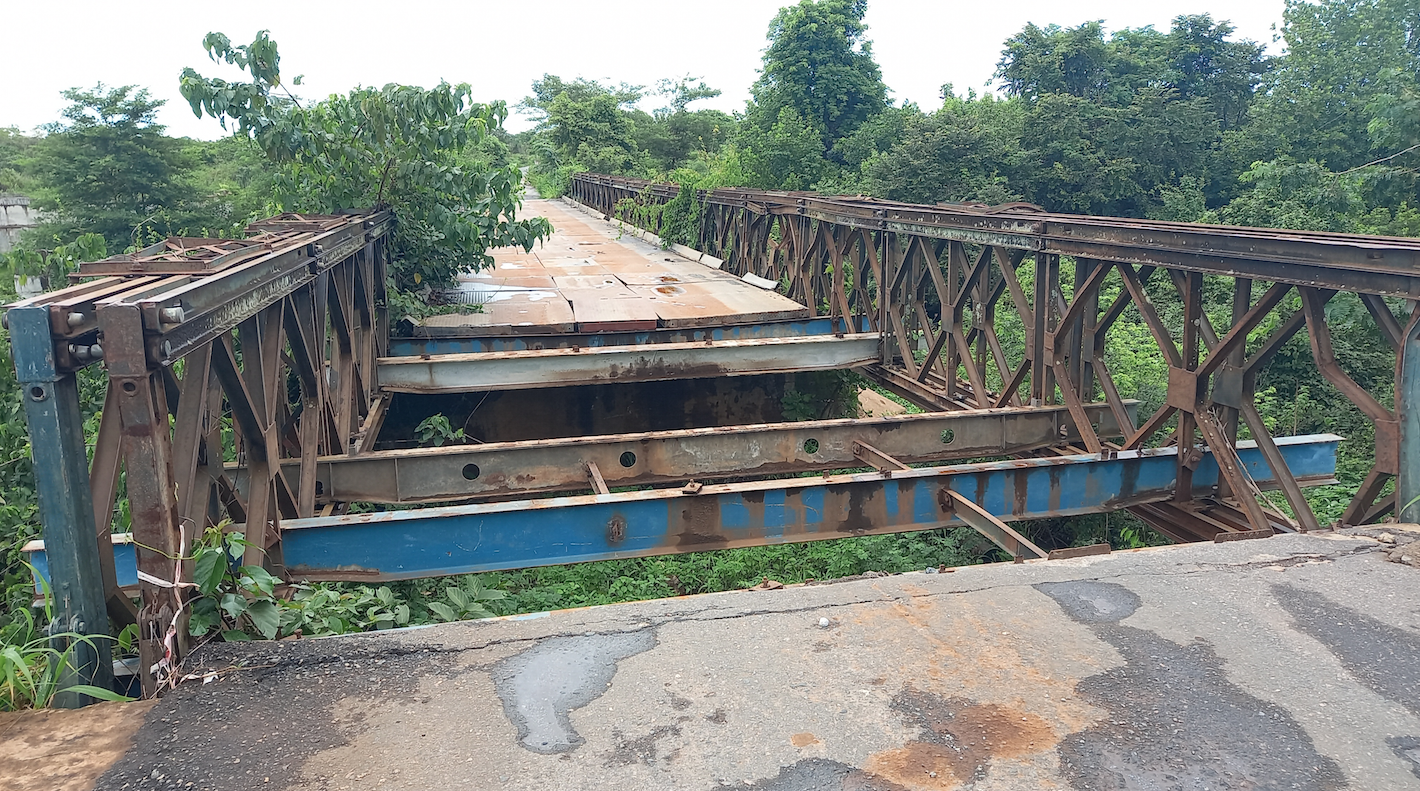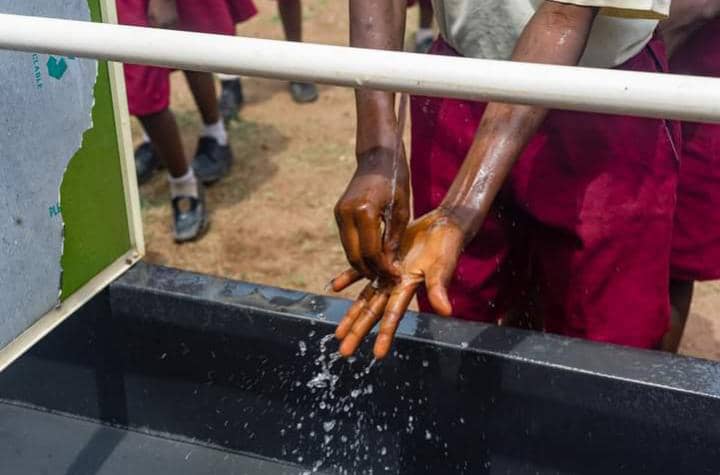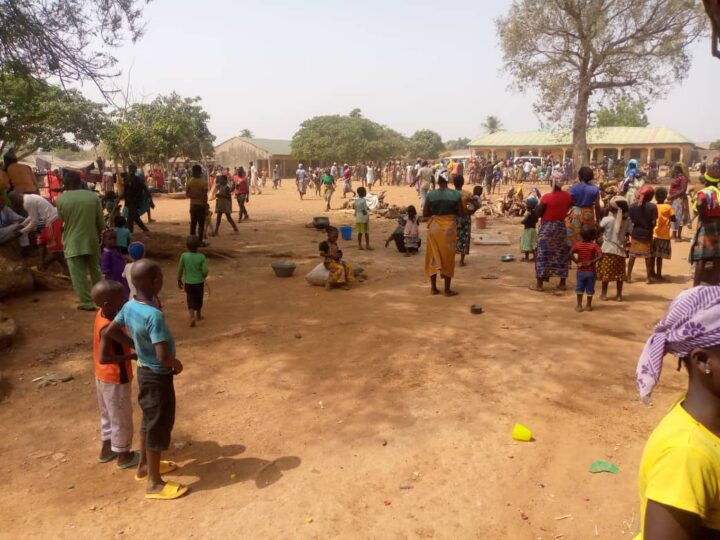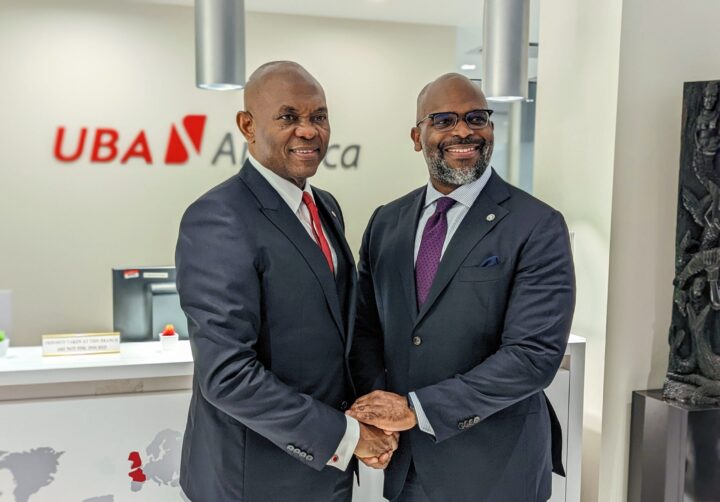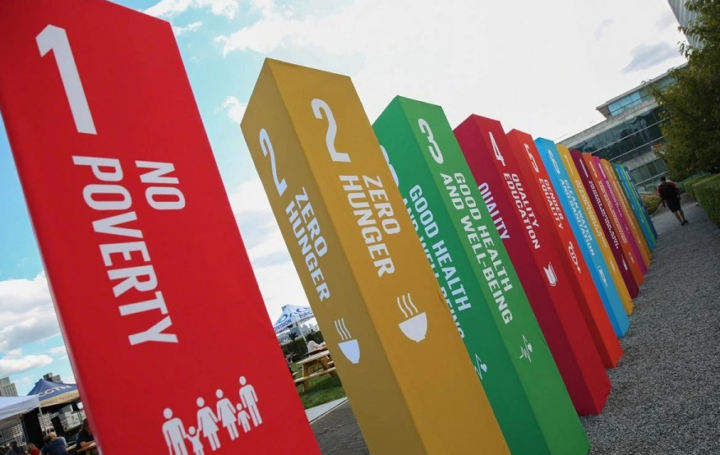Rickety Ohan bridge
BY OLUSOLA OLUDIRAN
Approaching the dusty end of Ilorin-Igbeti highway on a motorcycle, the eerie silence and overwhelming bush surrounding the old rickety Ohan bridge in Kwara state, gawked at the onlooker.
Getting closer, however, the deterioration of the Ohan bridge becomes more conspicuous. The metallic planks used as an alternative replacement to the washed-off asphalt have also broken, and for that fact, no vehicle has been able to drive across the bridge for a long period of time.
The Mooro bridge, which lies on the same route, is only a little better than the Ohan bridge. Moore is a little less wrecked than Ohan bridge. So, vehicles are still trying to ply the road, but with much caution; because its structure also depicts an appearance of a rusty bridge with structural deficiencies that are said to be life-threatening.
Advertisement

It was visible that the bridge had been mended severally with metallic materials either by the state government or transport workers. The width of the irons holding Mooro bridge together had been outrageously reduced such that two vehicles cannot drive across it at the same time. There were also some new concrete pillars supported with wooden slabs to indicate there is ongoing construction.

Drivers halted for oncoming vehicles to get across before the other would move on to avoid accidents and prevent traffic congestion on the bridge. Close to a temporarily fixed area of the bridge, there were other semblances of work to suggest a bridge being reconstructed despite its pillars and granites thickly surrounded by long-grown bush shrubs. It cuts the picture of a government project neglected over an extensive period of time.
Interjecting the reporter’s thoughts, Mahmoud Mumeen, a motorcyclist, mumbled, “I cannot count how many lives and businesses have been lost here because of the situation of the two bridges.”
Advertisement
Ohan and Mooro bridges were built during the colonial era. Findings showed that the bridges were created on a major road to serve as a link between Ilorin, in Kwara state, and the northern parts of Oyo state such as Igbeti, Kishi as well as the border between Nigeria and the Benin Republic, during the Second World War.

Residents said they were constructed over 100 years ago as bailey bridges —from pre-fabricated metal trusses. Later, Ohan and Mooro bailey bridges were enhanced during the pre-independence period, for easy passage from Kwara state to the Benin Republic.
Mumeen said the Ohan and Mooro bridges initially collapsed in 2016 and were later patched.
“Actually, they were constructed as bailey bridges; you know, portable prefabricated steel truss bridges, like the type used during the second world war by the British in the olden days. They are usually girder and deck bridges constructed and supposed to be reinforced regularly. But our government isn’t doing that because they are not taking cognisance of the fact that such bridges help isolated villages to be connected with larger communities,” he explained.
Advertisement
“That was why residents expected the government to find a quick and permanent solution to the bridges to boost their socio-economic development.
“After the collapse of Mooro bridge, the Ohan bridge took its turn in the flop. It’s just unbelievably sad that we are still waiting for the time the bridge will be completely fixed.”
RESIDENTS FRUSTRATED, BUSINESSES CRUMBLING

Daily, traders and commuters lament their frustrations using these bridges. Interacting with traders at the Mandala market on the outskirts of Ilorin, Funmilayo Wahab, who travels to Ilorin from Igbeti every five days to supply yams to her customers, narrated how she once carried a ton of yams on her head while trying to cross the river because of the collapsed bridge.
Advertisement
“My problem with these bridges is indescribable because the situation becomes worse during the rainy season and its antecedent floods. At such times, buses cannot pass through the river except it is offloaded,” Funmilayo said.

“I am seriously begging the government to help us fix the bridges so we can continue to do business with less stress.”
Advertisement
Kudirat Saheed, a garri distributor, said she had incurred many losses owing to the bad bridges. She said there were times when her products were soaked with water when she got stranded as a result of heavy rain which impeded vehicles from moving.
“That was a bad day for me. I am yet to fully recover from the debt I incurred from the loss of that day. And with the state of those bridges, it is difficult to bring a large number of goods to the market these days,” she said.
Advertisement

“Cost of transportation has skyrocketed and continues on the high side till now. We should appreciate the drivers still travelling on the bad roads, especially during the rainy season. The only way they can manage to be in business is to charge commuters exorbitantly.”
Drivers also expressed their lamentations over the awful condition of the bridges. Jimoh Bello, secretary of the National Union of Road Transport Workers (NURTW), Ilorin to Igbeti chapter, said drivers are also frustrated by the pains they endure on the bad roads. He added that this is what resulted in the constant increment in transportation fares.
Advertisement

“It’s truly hard for me to blame the drivers because most of them have to usually replace one or two spare parts after each trip. This is not to talk about the cost of fuel and we all know how expensive things are these days. Then, these people also have families to cater for including children in schools, and house rents to settle, among others,” Jimoh said.
Adisa Abdulrahaman, Mandala community’s deputy head, also share in the ordeal residents face daily.
“It is so sad that, of all roads, these bridges whose importance cannot be over-emphasised, are facing this kind of neglect by the government that knows what they are getting from the same road,” he said.
DASHED HOPE

In 2017, when residents of the area heard that the construction of new bridges was about to commence, they were happy. Shortly after, some government officials visited the area and contractors started appearing on the sites.
“We thought that was the end of our misery as well as monetary contributions to create alternative routes during rainy seasons. So, when the contractors started bringing their tools to the sites, we went to meet with them as residents of Mandala. They assured us that they were there to build other bridges at Mooro and Ohan rivers. We were so happy that we would no longer be taking long routes during the flood, and we were as well full of hope,” Mumeen said.
He said some of the residents joined the contractors to work on the site when the projects commenced.

“At one point, we just noticed they stopped coming to the site. That was how the semblance of succour for both residents and other road users got dashed without anyone bothering to explain to us what went wrong.”
Eventually, their cries paid off with the federal government giving instructions for the bridges to be reconstructed. Thereafter, the federal government, through the then ministry of power, works and housing, proposed a N122 million allocation in 2017 for the reconstruction of the two bridges without disclosing the contractors the project was awarded to.
Documents obtained by this reporter, however, revealed that the contract was awarded to Bili Joe + Berger Construction Limited at the cost of N865million, implying that the amount was increased above what was initially budgeted by the federal ministry of power, works and housing to an earlier unnamed contractor.
Around 2019, the contract was reviewed upward following the contractor’s request for additional funds. To that effect, the sum of N92, 948, 298. 520 million was released for the project, making the total money earmarked for the project N938, 133, 184.45, when added to the initially proposed N865million. In 2022, another request for price augmentation also made by the contractor got the nod, making the entire money allotted for the project N1, 214, 822,585.65.

Responding to the reporter’s request for information on the status of the project, the contractor said, “First, let me establish that though the money has been approved; they are yet to be released. At least, as a person, I have not received any yet. Also, I can’t say for sure why this particular project has been this long; though I know that sometimes projects are often delayed for many reasons.”
At the Federal Roads Maintenance Agency (FERMA), a top official, who spoke on condition of anonymity, said the agency is aware that the project was awarded a long time ago and should have been completed; but lots of things might have happened to cause a delay.
Efforts made by this reporter to speak with Rotimi Illiasu, Kwara commissioner for works, were not successful. Instead, the reporter was directed to the director of the civil engineering department who also refused to comment on the projects.
Checks on the government procurement website show that the project has reached the implementation, but not the completion stage.
PROCUREMENT REGULATIONS SIDELINED

Investigations have also shown that procurement processes ought to be fully considered, but were subtly sidelined by the procuring entity — the federal ministry of works. Findings showed that the ministry contravened the public procurement law by awarding the contract at a higher rate than what it had in its budget for the project.
Enacted in 2007, the public procurement act clearly determines how public procurements should be conducted by ministries, departments and agencies.
Whilst a part of section 16 (1b) of the law states that “subject to any exemption allowed by this Act, all public procurement shall be conducted based only on procurement plans supported by prior budgetary appropriations and no procurement proceedings shall be formalised until the procuring entity has ensured that funds are available to meet the obligations and subject to the threshold in the regulations made by the Bureau, has obtained a “Certificate of ‘No Objection’ to Contract Award” from the Bureau”. Section 6c also notes that “the successful proposal shall be the highest technical within the budget”.
The ministry of power, works and housing did not give much regard to the act of law. Rather, the ministry went ahead to award the contract which was out-rightly higher than its budget.
CONTRACTOR: BLAME INFLATION, NOT ME

Reaching the contractor didn’t turn out easy. Every effort nearly got stalled until the reporter was able to track him through his mobile line. Yet, requests for a physical interview session were subtly rebuffed.
Eventually, the contractor, Olatunji Musa, executive director of Billi Joe+Berger Nigeria Limited, spoke with the reporter via phone. When asked why the multimillion naira projects remain unfinished, he said his firm could not continue with the project because the costs of materials needed for construction have increased beyond the amount the contract was awarded.
“Inflation should be blamed for the abandonment of the projects. When it was awarded in 2017, we moved to the site immediately. Along the line, we realised that the quality rate of the project was poor. So, we wrote to the federal government and applied for augmentation. What is important that people do not understand is that we cannot go and sell our houses or sell our fathers’ inheritance because we are working for the government,” the contractor said.

“The money apportioned, and the rate at which the project was given are not accurate. We are in Nigeria. Cement three to four years ago was sold for N1,200; but today, we are buying it for N4,500. So, you want me to go and buy cement the government paid me at the rate of N1,200 for N4,500, who is going to pay me?”
But when asked for the actual amount the contract was awarded to him, Musa refused to answer the question as he bluntly retorted: “I can’t disclose that amount; that is our company’s secret for God’s sake! You are not our client, so we cannot disclose that.”
However, to obtain full details of the project, a freedom of information (FoI) letter was sent to the federal ministry of works and the contractor. The contractor said he could not respond to such a letter because his company signed a non-disclosure agreement with the federal ministry of works. He then asked the reporter to talk to the ministry.
Busayo Morakinyo, a social accountability expert, decried how abandoned projects have become a recurring situation between government agencies and contractors in the country; blaming it on the inability to follow the due process in procurement.
“If you look across the country these days, issues of abandoned projects are common sights. The saddest aspect is that contractors that abandon the projects go scot-free without due reprimand and this leaves nothing to be desired,” Morakinyo said.
He said he practically disagrees with contractors citing inflation as an excuse to delay projects. According to him, a contract awarded in 2017 should not be affected by the 2022 economic crisis, noting that such an attitude was borne out of a lack of value for the country’s finances as well as disregard for how people are affected by their lack of conscience for humanity.
“So, the question to ask is: What was the entire value of the project as of 2017 when the value of dollars to naira was around N250 or N350? That means the value of the money held down has been depleted,” he added.
This report was funded by the McArthur Foundation and the International Centre for Investigative Reporting (ICIR).
